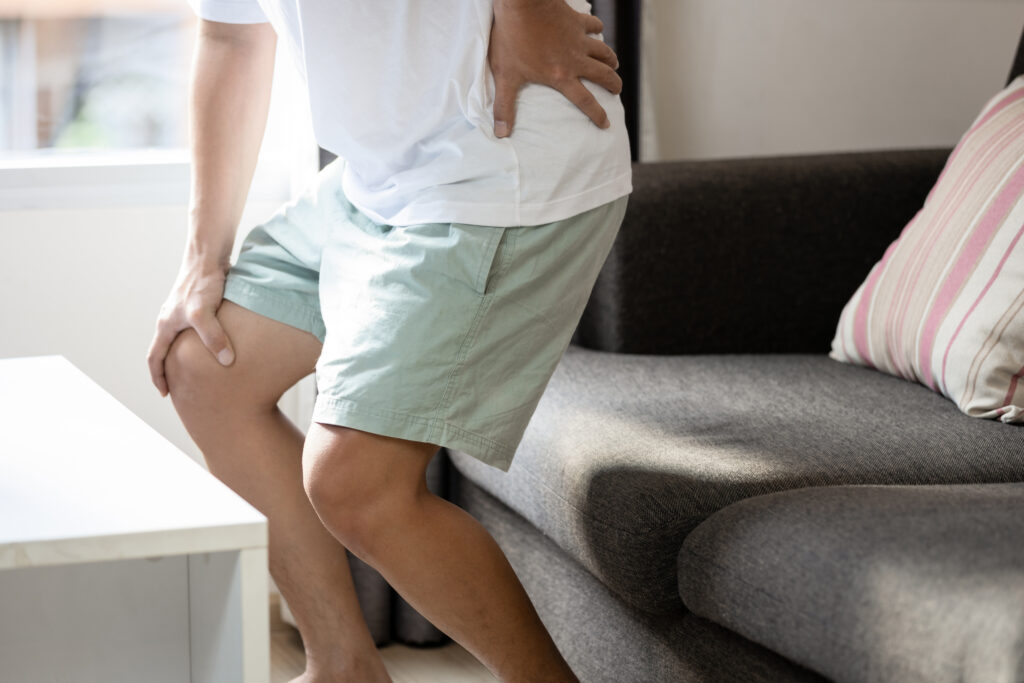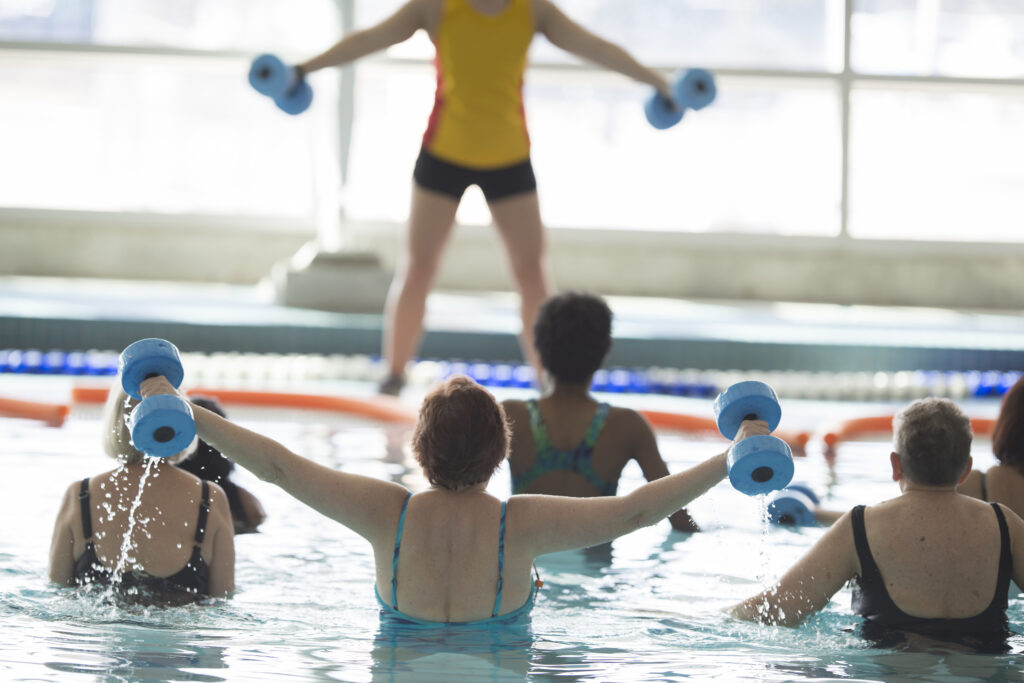 Hip or knee pain makes everything harder, especially when exercising. If high-impact exercises that jostle your joints cause you pain, there’s another way to stay fit: low-impact exercise.
Hip or knee pain makes everything harder, especially when exercising. If high-impact exercises that jostle your joints cause you pain, there’s another way to stay fit: low-impact exercise.
Switching to non-weight-bearing exercises will take the burden off your hips and knees allowing you to move more freely, with less pain. Low-impact cardio is much gentler on joints than high-impact exercises like running, burpees or jumping jacks. This makes low-impact options a great alternative for those who need to give their joints a rest, but still want to get a workout in. You can do low-impact cardio at home, in the gym, or outside.
Broadly speaking, cardiovascular exercise (cardio) is any type of exercise that raises your heart rate for an extended period. Low-impact cardio gets your heart rate up in a joint-friendly way. Unlike high-impact cardio, low-impact cardio does not place excessive or harmful amounts of stress on the body. With this type of exercise, you tend to always keep one foot on the ground and move smoothly, steadily and purposefully. Cardio exercise increases your heart rate because your muscles are working harder and require more oxygen, which causes faster and deeper breathing to keep up with demand. Low-impact exercise allows you to reap the benefits of cardio without placing stress on your joints. Ideal for those with joint conditions or injuries.
There are many kinds of low-impact workouts that can also provide a good cardio workout and muscle strengthening without stressing your joints.
Types of Low-Impact Workouts
Walking is a great form of low-intensity, low-impact cardio because you can set the pace and intensity. It’s perfect for all fitness levels, you can do it almost anywhere, and you don’t need any equipment.
Swimming is another option for a low-impact cardio workout. It is one of the best ways to spike your

heart rate without putting additional wear and tear on your joints. The buoyancy of the water helps relieve your joints of any pressure and provides resistance which helps build muscle and bone strength. Exercising in water is safer for balance and mobility, as there is no risk of falling.
There are several exercise machines that are gentle on your joints, provide a great cardio workout, strengthen muscles, and improve endurance and range of motion.
Elliptical training machines and stair machines provide fluid-motion, aerobic exercise forms that are easy on your joints. Elliptical machines mimic the movement of running, without the associated impact on your joints.
Cycling is a non-weight-bearing form of exercise that lets you get your heart rate up without impacting your joints. You can do this with a stationary bike at home, in the gym, or with your own bike outside.

Rowing offers an effective, low-impact cardio workout that is suitable for all fitness levels and will help you to build strength and endurance over time. The rowing machine works every muscle in your body head-to-toe, without placing undue stress on your knees.
The good news is that these exercises have many of the health benefits of high-impact exercises while also protecting your joints from wear and tear. Low-impact cardiovascular exercises help people with pre-existing joint injuries, arthritis, and chronic pain to reap all the benefits of cardiovascular training, without putting their bodies at risk.
Low-impact cardio puts minimal stress on the body, making it optimal for anyone who wants to move pain-free throughout their life. At the end of the day, the best form of cardio is the one you do consistently and regularly that generates high output and minimal stress on the body. The benefits of exercise are well worth it. Even small increases in moderate-intensity physical activity provide many health advantages.
Before starting any of these exercises, get the okay from your doctor or physical therapist. If your joints are barking back at you when you try to exercise, West Tennessee Healthcare has the experts to help you get back in action safely. With providers and clinics throughout West Tennessee, We can provide the help you need close to home. To schedule an appointment, click here.
